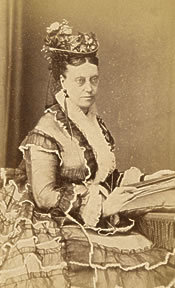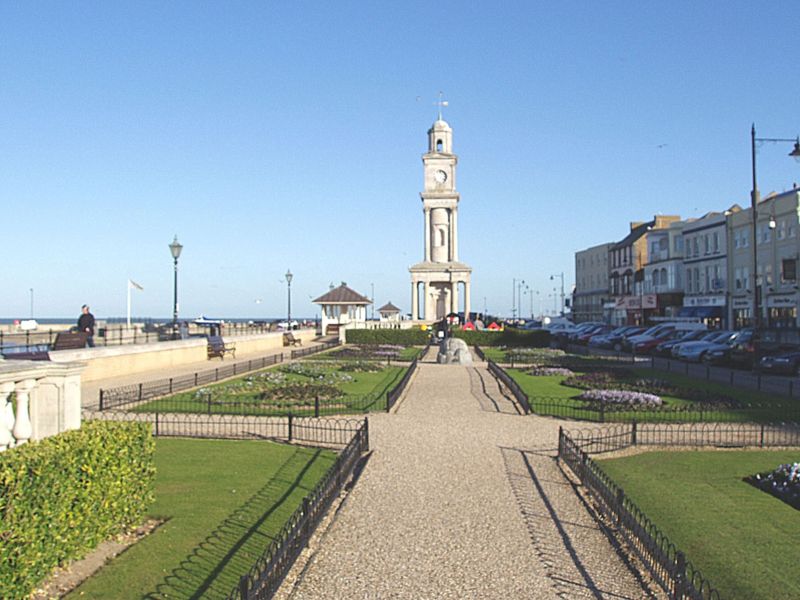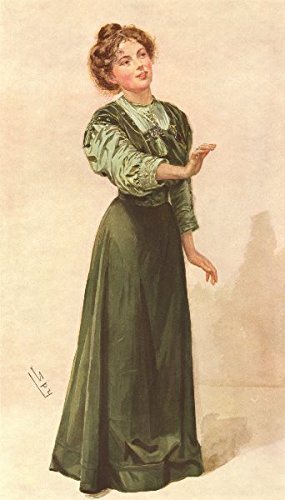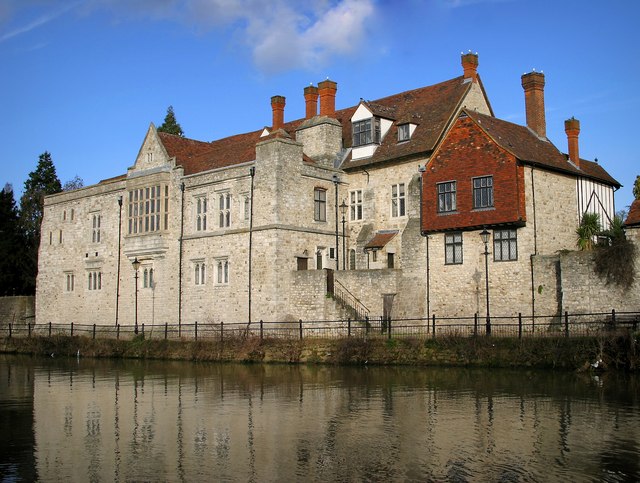|
Catherine Pine
Catherine Emily Pine (7 May 1864 – 14 August 1941) was active in the women's suffrage movement in Britain. She nursed the suffragette Emmeline Pankhurst and her son Henry. Pine travelled with Pankhurst before returning to Britain permanently in 1924. Family and education Catherine Emily Pine was born in Maidstone on 7 May 1864. Her parents were Robert Pine, a corn merchant, and his wife, Anne Bret. Catherine trained to be a nurse. Pine attended a school for nursing and trained as a nurse at St Bartholomew's Hospital between 1895 and 1897. After qualification she remained at St Bartholomew's until she was promoted to Hospital Sister in 1900. She was described by the staff as "‘punctual, very kind and attentive, very patient and even tempered". Career and support for suffragettes Pine opened a nursing home in 1907 in Pembridge Gardens, Notting Hill, London, working with Nurse Catherine Townend. Suffragettes who had gone on hunger strike and were forcibly fed in prison were t ... [...More Info...] [...Related Items...] OR: [Wikipedia] [Google] [Baidu] |
Emmeline Pankhurst
Emmeline Pankhurst (; Goulden; 15 July 1858 – 14 June 1928) was a British political activist who organised the British suffragette movement and helped women to win in 1918 the women's suffrage, right to vote in United Kingdom of Great Britain and Ireland, Great Britain and Ireland. In 1999, ''Time (magazine), Time'' named her as one of the Time 100: The Most Important People of the Century, 100 Most Important People of the 20th Century, stating that "she shaped an idea of objects for our time" and "shook society into a new pattern from which there could be no going back". She was widely criticised for her militant tactics, and historians disagree about their effectiveness, but her work is recognised as a crucial element in achieving women's suffrage in the United Kingdom. Born in the Moss Side district of Manchester to politically active parents, Pankhurst was 16 when she was introduced to the women's suffrage movement. She founded and became involved with the Women's Franch ... [...More Info...] [...Related Items...] OR: [Wikipedia] [Google] [Baidu] |
Campden Hill
Campden Hill is a hill in Kensington, West London, bounded by Holland Park Avenue on the north, Kensington High Street on the south, Kensington Palace Gardens on the east and Abbotsbury Road on the west. The name derives from the former ''Campden House'', built by Baptist Hicks, 1st Viscount Campden whose country seat was ''Campden House'' in the Gloucestershire town of Chipping Campden. The hill contains Holland Park, the former deer-park of Holland House; after being bombed in the London Blitz in 1940, the surviving parts of the mansion house can be seen in the south-west corner of the park. To the east of Holland House, the south-west side of the hill is characterized by large Victorian houses which are part of the Phillimore estate. Aubrey House is situated on top of Campden Hill. Campden Hill Square on the north-west side is formed of large Regency houses. The small street called Campden Hill runs from Campden Hill Road westward into Holland Park. It was built on par ... [...More Info...] [...Related Items...] OR: [Wikipedia] [Google] [Baidu] |
1864 Births
Events January * January 13 – American songwriter Stephen Foster ("Oh! Susanna", "Old Folks at Home") dies aged 37 in New York City, leaving a scrap of paper reading "Dear friends and gentle hearts". His parlor song "Beautiful Dreamer" is published in March. * January 16 – Denmark rejects an Austrian-Prussian ultimatum to repeal the Danish Constitution, which says that Schleswig-Holstein is part of Denmark. * January 21 – New Zealand Wars: The Tauranga campaign begins. February * February – John Wisden publishes ''Wisden Cricketers' Almanack, The Cricketer's Almanack for the year 1864'' in England; it will go on to become the major annual cricket reference publication. * February 1 – Danish-Prussian War (Second Schleswig War): 57,000 Austrian and Prussian troops cross the Eider River into Denmark. * February 15 – Heineken N.V., Heineken Brewery is founded in the Netherlands. *American Civil War: ** February 17 – The tiny Confed ... [...More Info...] [...Related Items...] OR: [Wikipedia] [Google] [Baidu] |
British Suffragists
A movement to fight for women's right to vote in the United Kingdom finally succeeded through acts of Parliament in 1918 and 1928. It became a national movement in the Victorian era. Women were not explicitly banned from voting in Great Britain until the Reform Act 1832 and the Municipal Corporations Act 1835. In 1872 the fight for women's suffrage became a national movement with the formation of the National Society for Women's Suffrage and later the more influential National Union of Women's Suffrage Societies (NUWSS). As well as in England, women's suffrage in Wales, women's suffrage movements in Wales, Women's suffrage in Scotland, Scotland and other parts of the United Kingdom gained momentum. The movements shifted sentiments in favour of woman suffrage by 1906. It was at this point that the militant campaign began with the formation of the Women's Social and Political Union (WSPU). The outbreak of the Home front during World War I#Britain, First World War in 1914 led to ... [...More Info...] [...Related Items...] OR: [Wikipedia] [Google] [Baidu] |
Museum Of London
London Museum (known from 1976 to 2024 as the Museum of London) is a museum in London, covering the history of the city from prehistoric to modern times, with a particular focus on social history. The Museum of London was formed in 1976 by amalgamating the collection previously held by the City Corporation at the Guildhall, London, Guildhall Museum (founded in 1826) and that of the London Museum (1912–1976), London Museum (founded in 1911). From 1976 to 2022, its main site was in the City of London on London Wall, close to the Barbican Centre, part of the Barbican complex of buildings created in the 1960s and '70s to redevelop a bomb-damaged area of the city. In 2015, the museum revealed plans to move to the General Market Building at the nearby Smithfield, London, Smithfield site. Reasons for the proposed move included the claim that the current site was difficult for visitors to find, and that by expanding, from 17,000 square metres to 27,000, a greater proportion of the mus ... [...More Info...] [...Related Items...] OR: [Wikipedia] [Google] [Baidu] |
Ethel Gordon Fenwick
Ethel Gordon Fenwick (née Manson; 26 January 1857 – 13 March 1947) was a British nurse who played a major role in the History of Nursing in the United Kingdom. She campaigned to procure a nationally recognised certificate for nursing, to safeguard the title "Nurse", and lobbied Parliament to pass a law to control nursing and limit it to "registered" nurses only. Biography She was born Ethel Gordon Manson in Spynie, near the Moray town of Elgin in Scotland, the daughter of a wealthy farmer and doctor who died later the same year. Ethel's mother then married George Storer, a Member of Parliament. She was educated privately at Middlethorpe Hall, Middlethorpe, Yorkshire. At the age of 21 she commenced nurse training at the Children's Hospital in Nottingham as a paying probationer nurse, and then at Manchester Royal Infirmary. Her expertise was soon noted and it was not long before she left for London, where she worked at a hospital in Richmond. Fenwick was a ward sister at ... [...More Info...] [...Related Items...] OR: [Wikipedia] [Google] [Baidu] |
British College Of Nurses
The British College of Nurses was set up in 1926 by Ethel Bedford Fenwick in order to offer its members professional education and support of various kinds. It was to be run by nurses, for nurses, in a democratic manner. Fenwick had many supporters but the College only lasted for thirty years. As a condition of their royal charters both Fenwick's Royal British Nurses' Association and the rival Royal College of Nursing were required to have public figures who were not nurses on their boards. Fenwick was determined that "no employers of Nurses, nor any member of an employing body", should have a seat on the British College of Nurses Council (BCN), and in setting up an organisation that was not covered by a royal charter ensured that the BCN was governed by a Council "formed of Registered Nurse A registered nurse (RN) is a healthcare professional who has graduated or successfully passed a nursing program from a recognized nursing school and met the requirements outlined by ... [...More Info...] [...Related Items...] OR: [Wikipedia] [Google] [Baidu] |
Herne Bay
Herne Bay is a seaside town on the north coast of Kent in South East England. It is north of Canterbury and east of Whitstable. It neighbours the ancient villages of Herne, Kent, Herne and Reculver and is part of the City of Canterbury local government district, although it remains a separate town with countryside between it and Canterbury. Herne Bay's seafront is home to the world's first freestanding purpose-built Clock Tower, Herne Bay, Clock Tower, built in 1837. From the late Victorian period until 1978, the town had the second-longest Herne Bay Pier, pier in the United Kingdom.Herne Bay Pier at www.theheritagetrail.co.uk (accessed 7 July 2008) The town began as a small shipping community, receiving goods and passengers from London en route to Canterbury and Dover. The town rose to prominence as ... [...More Info...] [...Related Items...] OR: [Wikipedia] [Google] [Baidu] |
Jenny (Jane) Kenney
Jane "Jenny" Kenney (1884–1961) also known as Jennie, was a British suffragette and Montessori teacher, who supported her sisters Annie Kenney and Jessie Kenney in the Women's Social and Political Union. She later became a joint principal of an independent school in New York, USA. Life and career Jane Kenney was born in Lees, Oldham, Lancashire, the eighth child of a family of twelve siblings (eleven of whom survived infancy) of Horatio Nelson Kenney (1849–1912) and Ann Wood (1852–1905) both cotton workers. Her father was from Ashton-under-Lyne whose parents were blacksmith's labourer, William and Agnes. Her mother's father was James Wood, a cotton mill worker. Her parents were married in April 1873 at Leesfield parish church, and are buried at Greenacres cemetery, Oldham. Although they lived in poverty, and were largely home educated due to working from a young age, both their parents encouraged them to read and debate. Kenney began working in the cotton mill as a car ... [...More Info...] [...Related Items...] OR: [Wikipedia] [Google] [Baidu] |
Montessori Education
The Montessori method of education is a type of educational method that involves children's natural interests and activities rather than formal teaching methods. A Montessori classroom places an emphasis on hands-on learning and developing real-world skills. It emphasizes independence and it views children as naturally eager for knowledge and capable of initiating learning in a sufficiently supportive and well-prepared learning environment. It also discourages some conventional methods of measuring achievement, such as grades and tests. The method was started in the early 20th century by Italian physician Maria Montessori, who developed her theories through scientific experimentation with her students. The method has since been used in many parts of the world, in public and private schools. A range of practices exists under the name "Montessori", which is not trademarked. Popular elements include mixed-age classrooms, student freedom (including their choice of activity ... [...More Info...] [...Related Items...] OR: [Wikipedia] [Google] [Baidu] |
Christabel Pankhurst
Dame Christabel Harriette Pankhurst (; 22 September 1880 – 13 February 1958) was a British suffragette born in Manchester, England. A co-founder of the Women's Social and Political Union (WSPU), she directed Suffragette bombing and arson campaign, its militant actions from exile in France from 1912 to 1913. In 1914, she supported the war against Germany. After the war, she moved to the United States, where she worked as an evangelist for the Second Adventist movement. Early life Christabel Pankhurst was the daughter of women's suffrage movement leader Emmeline Pankhurst and radical socialist Richard Pankhurst (politician), Richard Pankhurst and sister to Sylvia Pankhurst, Sylvia and Adela Pankhurst. Her father was a barrister and her mother owned a small shop. Christabel assisted her mother, who worked as the Registrar of Births and Deaths in Manchester. Despite financial struggles, her family had always been encouraged by their firm belief in their devotion to causes rathe ... [...More Info...] [...Related Items...] OR: [Wikipedia] [Google] [Baidu] |
Maidstone
Maidstone is the largest Town status in the United Kingdom, town in Kent, England, of which it is the county town. Maidstone is historically important and lies east-south-east of London. The River Medway runs through the centre of the town, linking it with Rochester, Kent, Rochester and the Thames Estuary. Historically, the river carried much of the town's trade as the centre of the agricultural county of Kent, which is known as the Garden of England. There is evidence of settlement in the area dating back before the Stone Age. The town, part of the borough of Maidstone, had an approximate population of 100,000 in 2019. Since World War II, the town's economy has shifted from heavy industry towards light industry and services. Toponymy Anglo-Saxon period of English history, Saxon charters dating back to show the first recorded instances of the town's name, ''de maeides stana'' and ''maegdan stane'', possibly meaning ''stone of the maidens'' or ''stone of the people''. The latt ... [...More Info...] [...Related Items...] OR: [Wikipedia] [Google] [Baidu] |








